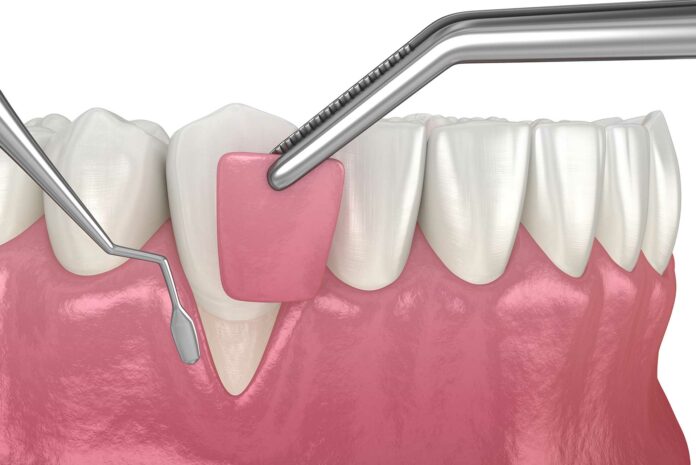If your gums have become unhealthy, you may need to have specialized dental surgery to get them healthy again.
Gum surgery is safe and usually very effective. However, you will need to be prepared for some pain and swelling during the recovery process.
A good way to manage this pain is by taking over-the-counter meds like ibuprofen, aspirin or naproxen. These medications should take most of the edge off of the discomfort.
Is Gum Surgery Safe?
Gums are an important part of your overall oral health and help to protect your teeth, prevent sensitivity, and keep your smile looking great. However, sometimes the gums get damaged or don’t function properly and may need to be treated with gum surgery.
Gum disease destroys the gum and bone tissue that holds your teeth in place, which results in “pockets” or gaps around your teeth. These pockets allow bacteria to enter your tooth roots, causing gum disease, and eventually tooth loss.
To treat gum disease, Dr. Ressler removes tartar and harmful bacteria from these pockets with a water-cooled laser (Erbium). He also cleans your root surfaces to prepare healthy gum tissue for reattachment.
Patients who have a lowered gum line, known as gum recession, need a gum graft to cover the exposed parts of their teeth and reduce the risk of sensitivity. Tissue grafting requires a surgical procedure to remove soft tissue from one area of the mouth and reattach it to the receding gum line.
What Happens During the Procedure?
There are a number of different types of gum surgery that a dentist can perform. The type of surgery you receive depends on the severity of your gum disease and what kind of treatment your doctor thinks is best for you.
For example, if you have gums that are too short, the surgeon can lengthen them with tissue grafts. This can improve your oral health and cosmetic appearance, as well as help correct issues like dental malocclusion.
Gum grafting is one of the most common kinds of gum surgery. The procedure involves taking a piece of healthy gum tissue from another area of your mouth and attaching it to the tooth roots or recessed gums where you need it.
This is a minimally invasive technique that doesn’t require any special anesthesia or medication, so you can go home immediately after the surgery. However, it is essential to have a trusted friend or family member drive you to and from the office, as the combination of pain medications and anesthesia can make driving unsafe.
How Long Will the Recovery Take?
The recovery process after gum surgery is usually a short one. Most patients return to work and enjoy normal life activities within two weeks of the procedure.
You may have a few days of pain and swelling, so it’s important to take pain medication as instructed by your dentist. Applying ice to the area after surgery can help reduce inflammation and pain.
Avoid talking if possible to prevent the gauze from moving around and causing discomfort or stitches to break. You should also keep your mouth clean, especially the area where the graft was placed.
Eating soft foods will help minimize irritation at the surgical site, such as bananas, oatmeal, eggs, and mashed potatoes. Try to avoid hard or spicy foods, as these can aggravate the treatment site.
Your diet should include plenty of liquids. Soups, apple sauce, shakes, and pudding all help cool the mouth. You should also test hot foods to see if they’ve cooled before eating, as this will aid healing.
What Can I Expect After the Procedure?
After gum surgery, you may experience some bleeding, swelling and discomfort. To manage these side effects, make sure you take all your medications as directed and get plenty of rest.
You should also avoid hot or cold foods until your mouth heals. This will help keep your wounds from irritating and delaying the healing process.
When possible, try to chew on sides of your mouth that have not been affected by the procedure, or eat soft foods. These are easier to chew than hard, sticky or fatty foods, which can aggravate the surgical site and impede healing.
You can also help relieve pain and swelling by applying ice packs or other cold compresses to your cheeks around the surgical site for up to 20 minutes at a time. Swelling should gradually subside over the next few days.


